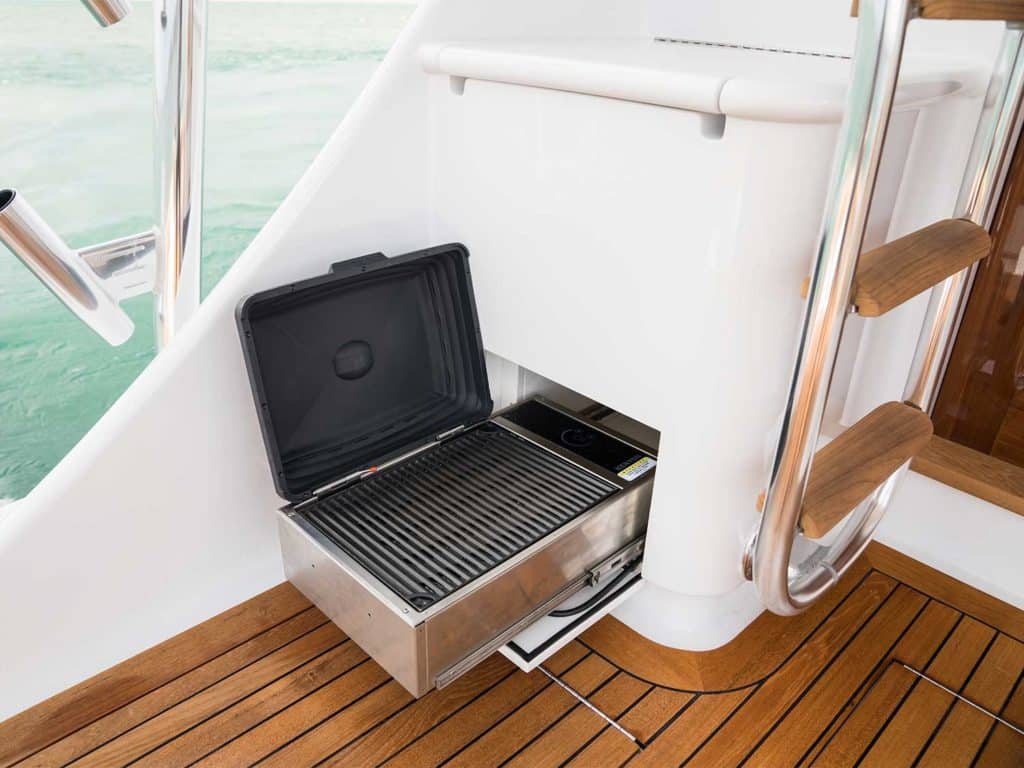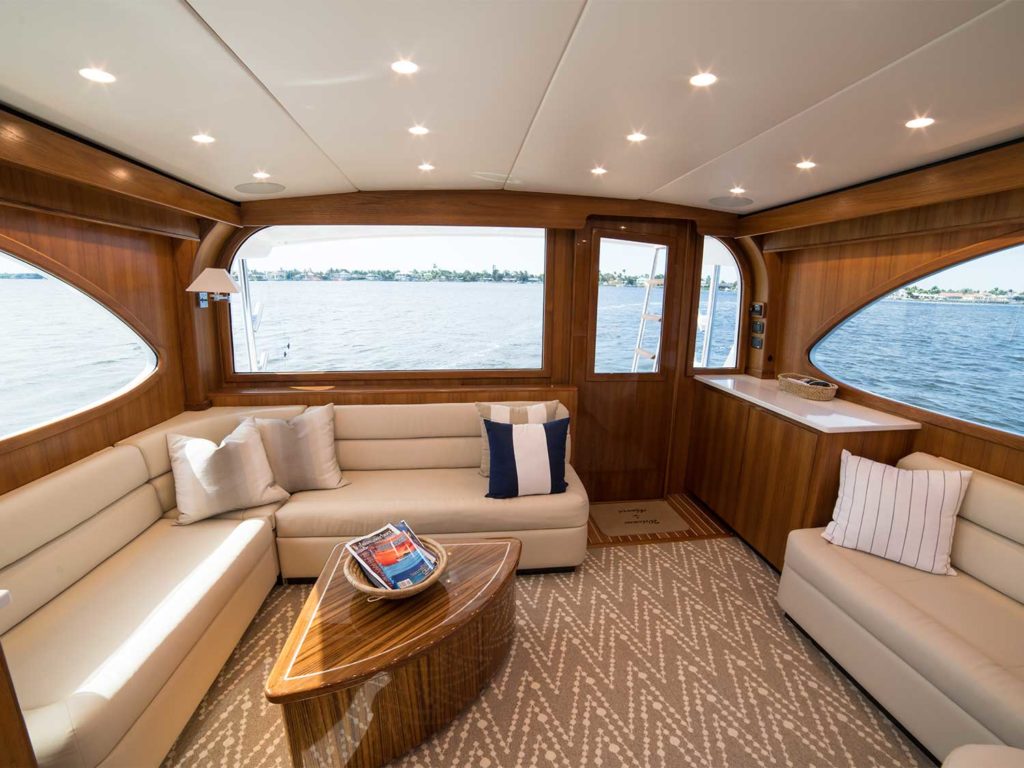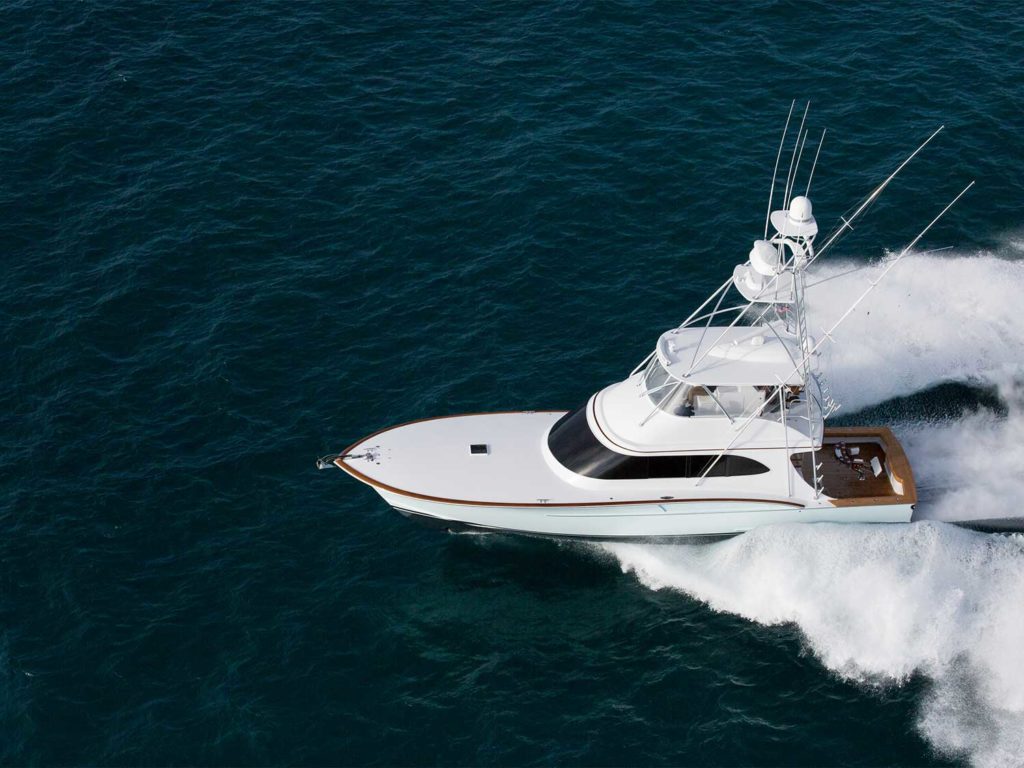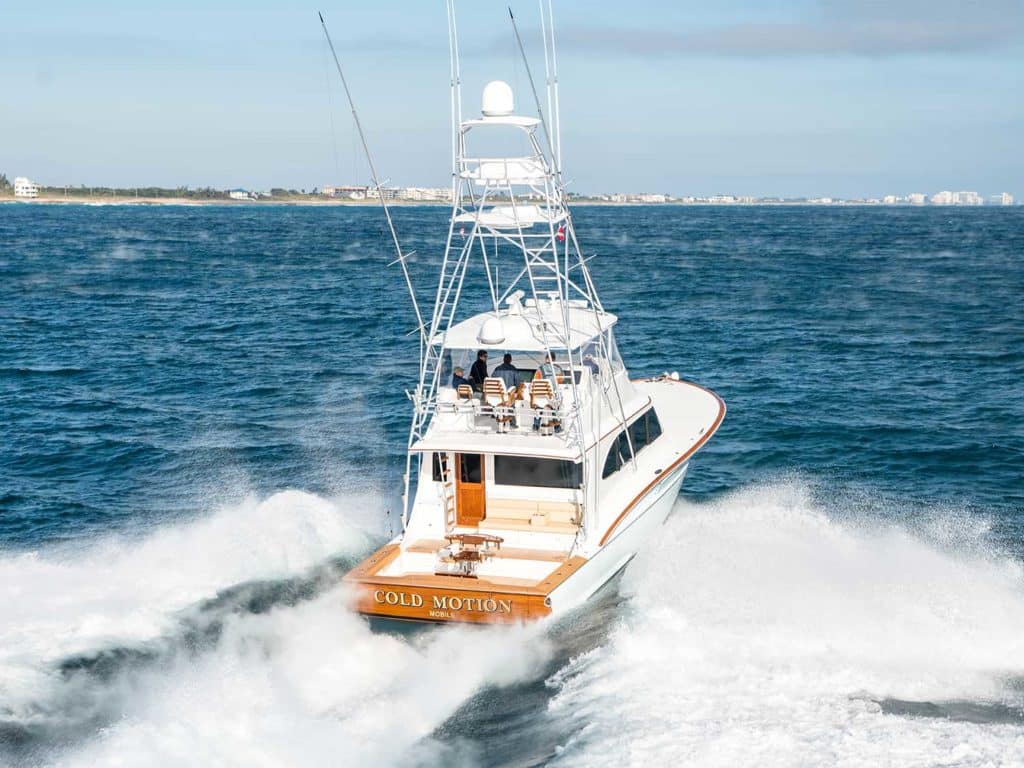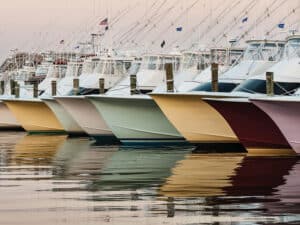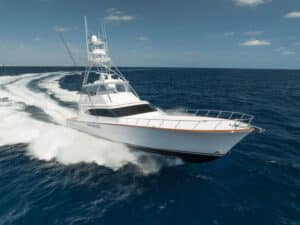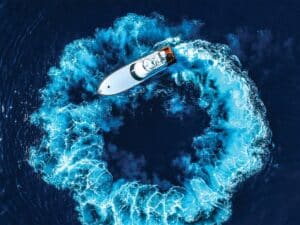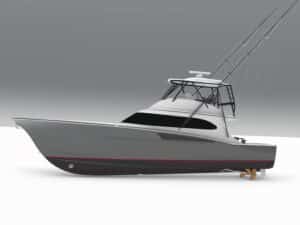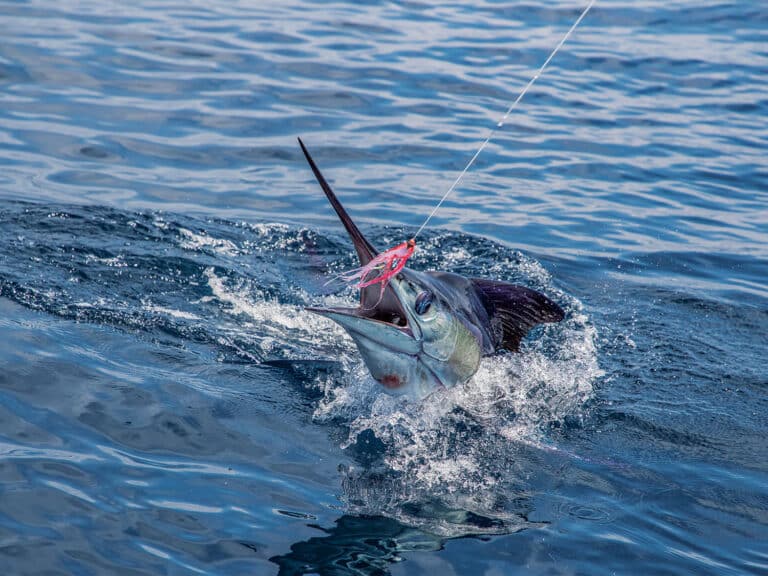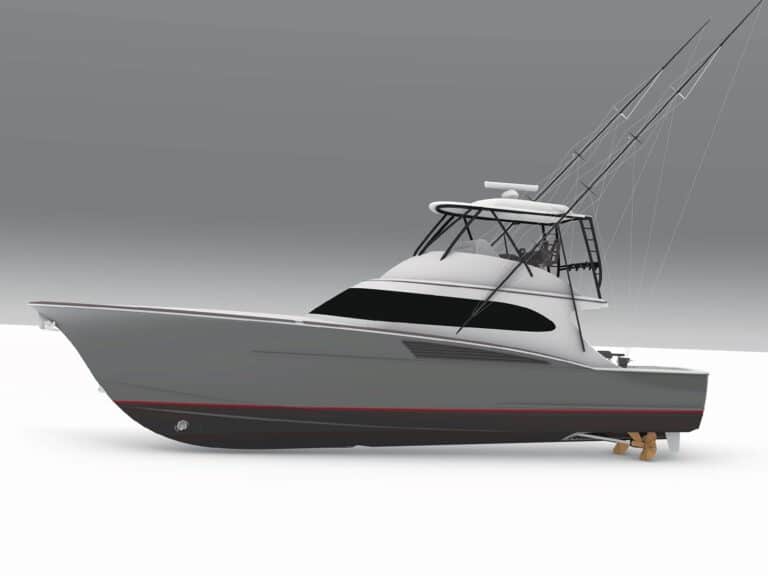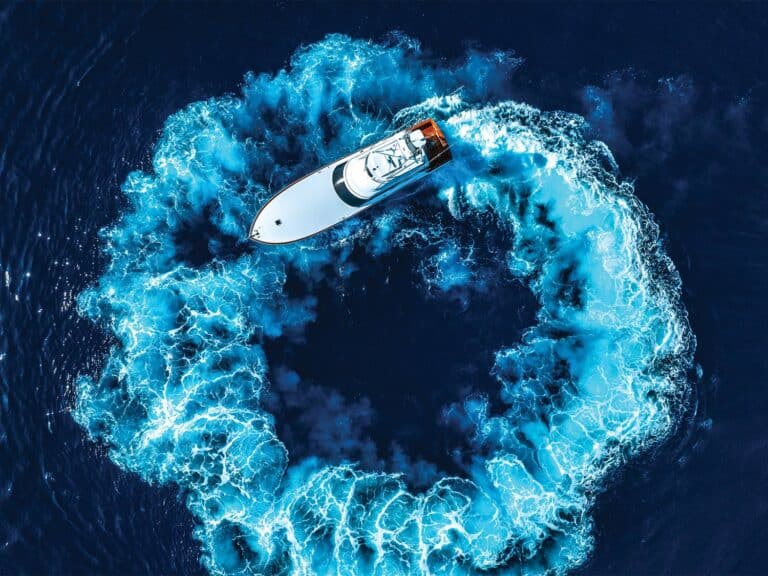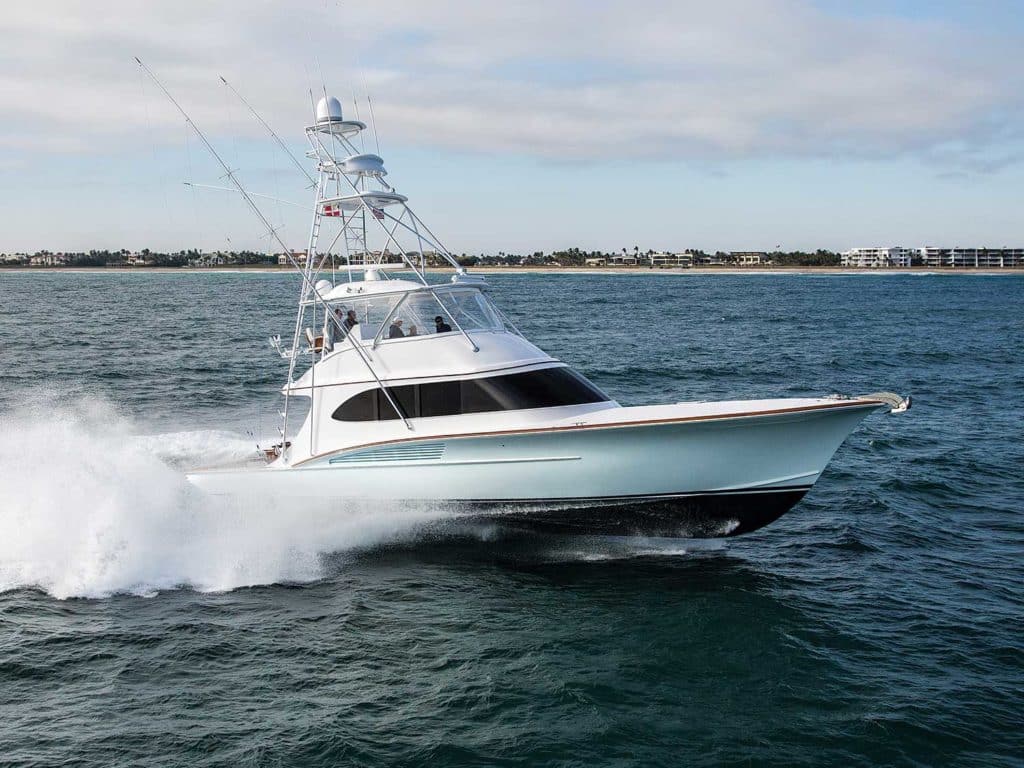
Stepping aboard the 60-foot Cold Motion in Stuart, Florida, there was no mistaking the boat’s North Carolina DNA, with its raked entry at the waterline, moderate bow flare and its all-business cockpit with stylish tumblehome at the transom. The latest build from Caison Yachts had just returned from a shakedown cruise to the Abacos, where the owner and his family enjoyed a week of wahoo fishing and diving in the clear Bahamian waters.
The boat was slated for another island adventure in just a few days, which gave us a chance to get aboard and collect some performance data during her brief stay in Florida. The January weather was gusty, with smoke on the water from the chilly winter air; the 3- to 5-foot seas provided an excellent environment for testing the boat’s disposition.
Performance
Powered by a pair of 1,700 hp Caterpillar C32s, Cold Motion rushed to a top speed of 41.2 knots in the slack water of the St. Lucie Inlet. In the ocean, however, the performance was more telling. With 12 degrees of transom deadrise, the hull lifts effortlessly as power is applied. At 1,200 rpm the boat slides along easily at 17 knots. At 2,060 rpm, we were at 36.2 knots and burning about 120 gph. Up-sea or down, Cold Motion negotiated the confused ocean with ease. With water breaking just behind the deckhouse windshield at cruising speed and above, the foredeck remained dry for most of the ocean run, with a sharp spray rail at the chine diverting water away from the hull. The boat’s high-speed rudder design and the power-assisted hydraulic steering with four turns lock-to-lock delivered quick response.
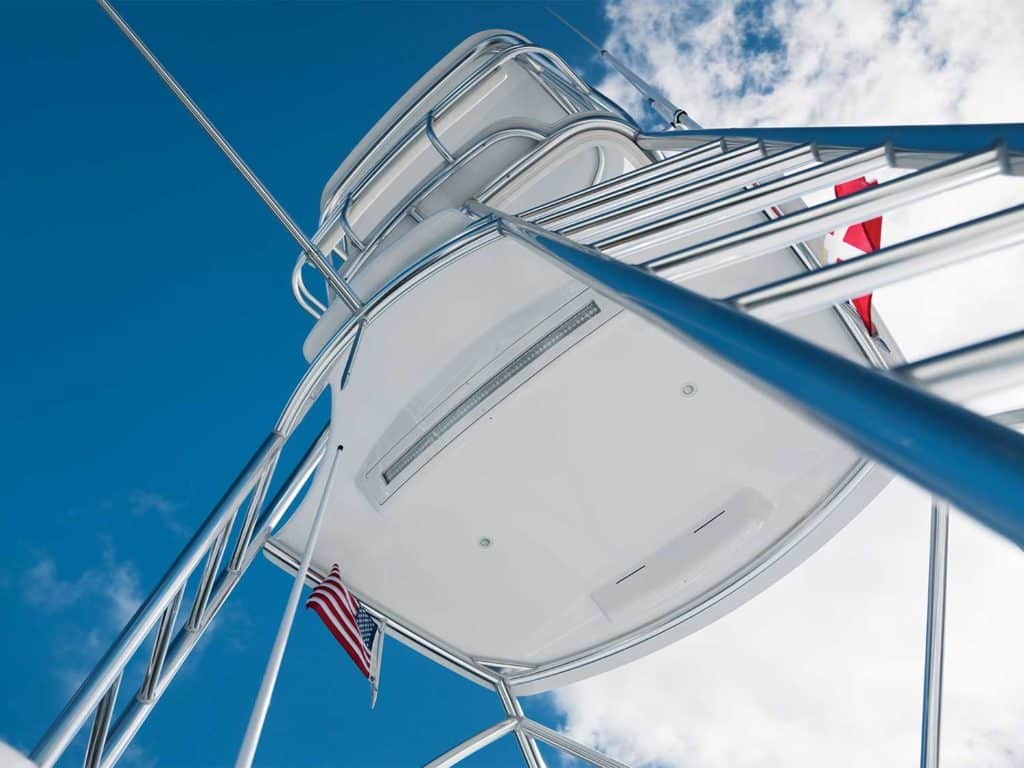
Construction
Cold Motion is Donnie Caison’s 15th build since opening his shop in Hampstead, North Carolina, in 1999. Built on a jig, the cold-molded hull construction includes three layers of ½-inch fir plywood on the bottom with a layer of 1708 biaxial fiberglass inside and out. Three layers of Okoume plywood, also covered with 1708, are used on the hull sides. Topside structural components are cored with composites, coated with epoxy and painted to a flawless finish. The engine room, lazarette and bilges shine with Awlgrip and are easy to keep clean. A faux teak painted half-round on the deckhouse, toe rail, salon door and transom complement the end result, while propeller pockets keep the draft at 4½ feet.
Specs
| LOA: | 60’4″ |
| BEAM: | 17’8″ |
| DRAFT: | 4’6″ |
| DISPL.: | 65,000 lb. |
| FUEL: | 1,600 gal. |
| WATER: | 225 gal. |
| POWER: | Twin V12 1700 HP Caterpillar C32A |
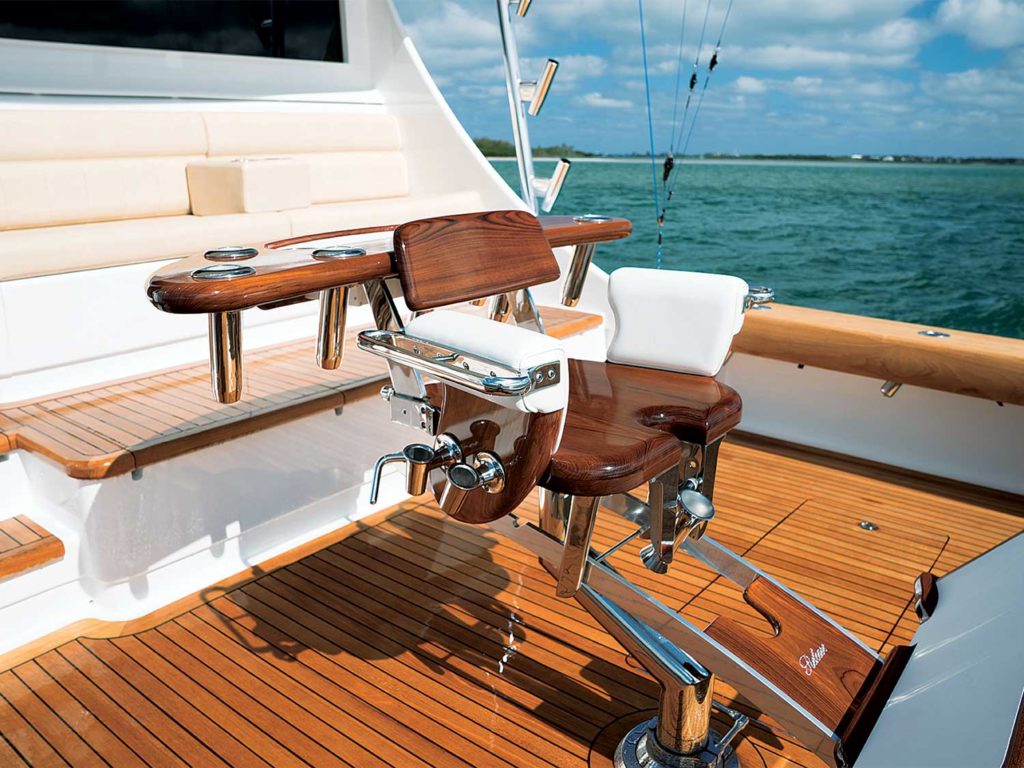
Flybridge
The centerline helm is fitted with Schmitt single-lever electronic controls with built-in buttons for the Side-Power DC bow thruster. The varnished teak helm pod is in good company with the pair of Release Marine pedestal chairs. Navigation and communication electronics are neatly placed in the raised console with an acrylic lid and stainless gas shocks. Additional instrumentation and electronics stow neatly overhead in the Palm Beach Towers’ hardtop drop-down box. Abaft is a pair of recessed teaser reels. PBT also supplied the tuna tower, fitted with Rigid Industries spot- and floodlights for nighttime navigation and fishing.
An L-shape lounge to port includes a reversible backrest and is a perfect location for watching baits in the spread, with quick access via the aluminum ladder to the cockpit. A second lounge to starboard in front of the helm also is home to a high-capacity bait freezer and refrigerator. The flybridge is air conditioned, and the reverse cycle heat came in handy during our January test run.
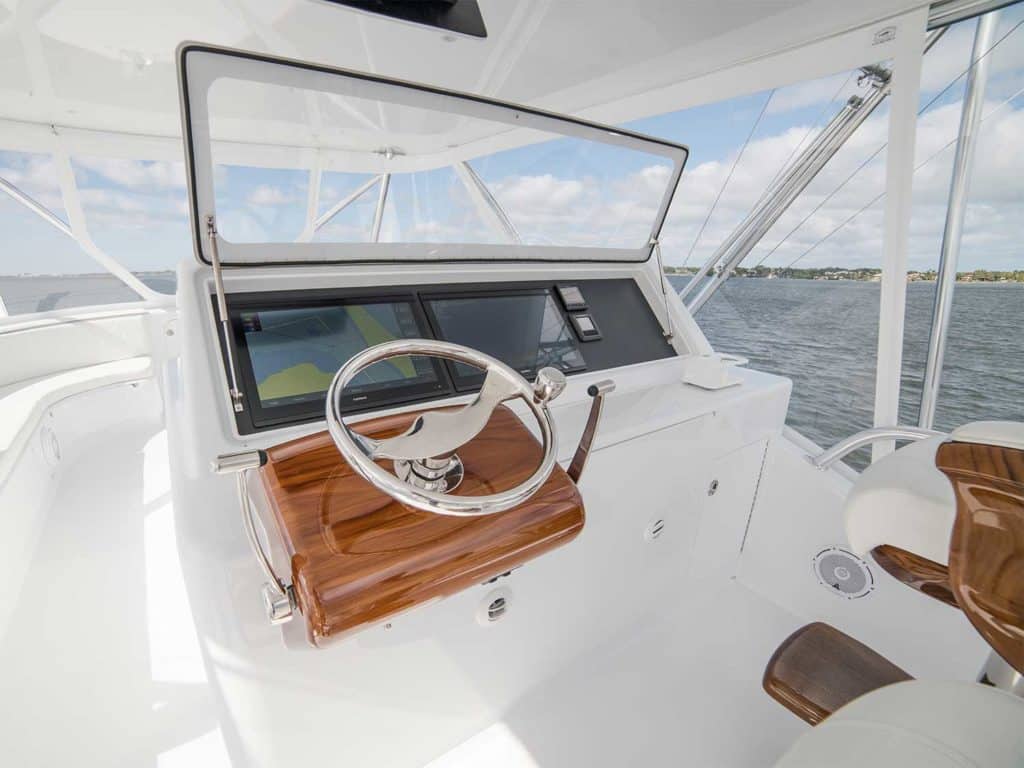
Cockpit
The 195-square-foot cockpit will satisfy hardcore anglers, with plenty of room to work your way around the Release Marine fighting chair. The teak-planked sole has a gentle crown to divert water out through the custom stainless-steel scuppers; the deck provides good footing and features a 34-inch reach to the waterline. The mezzanine is generously proportioned and according to Caison, the measurements are similar to those of a living room couch, which makes it especially comfortable, as does the cool air conditioning flowing from the backrest cushion. The mezzanine deck also is 30 inches long, which adds extra capacity in the refrigerated boxes and the ice dump bin. A pair of recessed dunnage boxes in the sole carry fish and other gear. Three transom wells can handle more fish, live bait and up to 10 tuna tubes with its two-pump system for proper flow and redundancy.
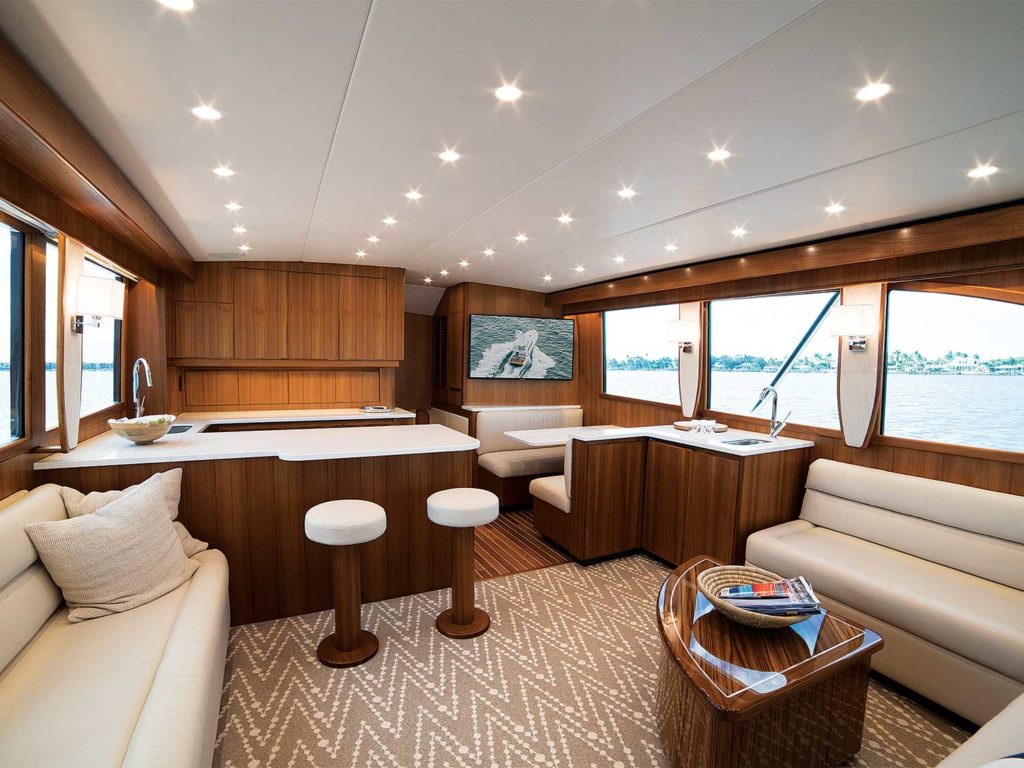
Accommodations
Taking advantage of the boat’s nearly 18-foot beam, the interior features an inviting layout with an expansive salon and galley in the deckhouse, as well as three staterooms and two heads below. The teak joinery is flawless throughout the yacht, and the satin finish is attractive and easy to maintain. Immediately inside the electrically activated salon door is an Ultraleather lounge on the portside, opposite an L-shape couch with ample stowage space underneath for bulk gear and fishing tackle. The U-shaped galley with Amtico vinyl flooring is efficiently designed with under-counter, drawer-style Sub-Zero refrigeration, a stainless-steel sink, recessed electric cook top, quartz countertops, and generous cabinet space for supplies and cookware. A flat-screen TV is mounted on the starboard bulkhead and can be viewed from any seat in the salon.
The boat’s staterooms are well-appointed and comfortable; privacy doorways are curved, adding yet another artful detail. The port stateroom has crossover berths; meanwhile the starboard cabin has upper and lower berths and wall-rack stowage for six 50-pound-class outfits. Both staterooms share the day head and shower. The master stateroom is forward with a queen bed angled off the port side facing a flat-screen TV and a wall of cabinetry and cedar-lined hanging lockers.
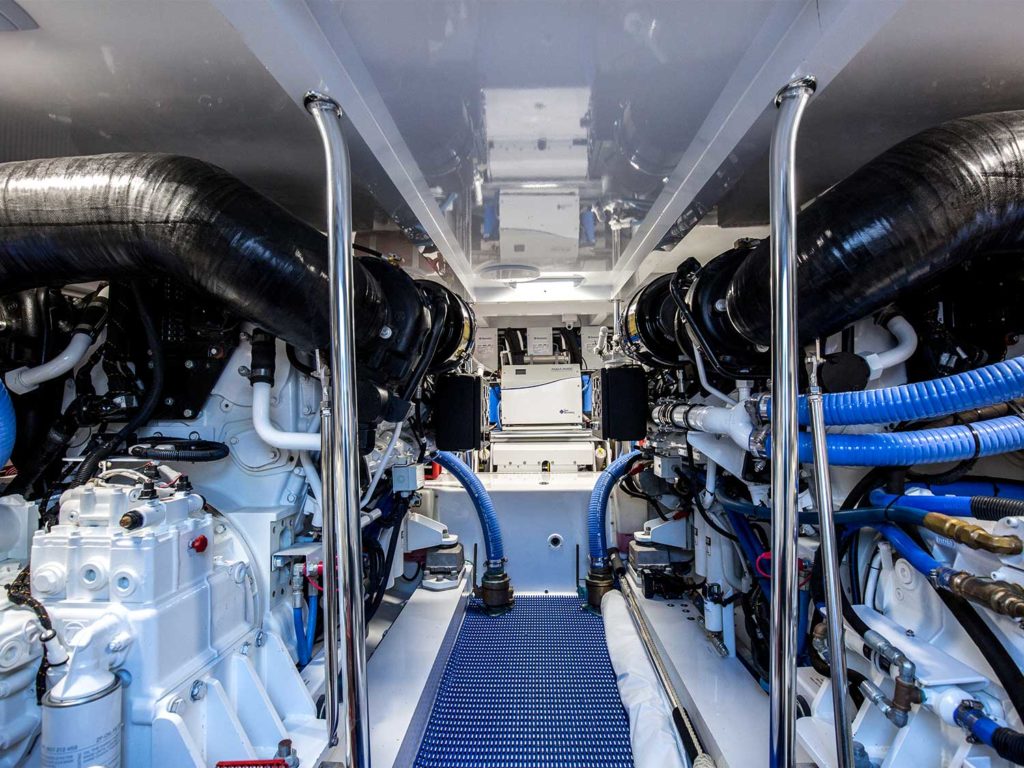
Engine Room
Accessed through the mezzanine deck, the engine room has 5 feet, 10 inches of headroom on the centerline and plenty of room for the big Cats, which breathe in ample fresh air via the Delta-T ventilation and water-suppression system. Bright white Awlgrip lightens the space everywhere you look and it is easy to move around for daily and routine maintenance chores, from monitoring the Racor filters to checking the batteries outboard of the engines.
In designing the machinery environment, Caison uses a 3D computer program to illustrate the size and shape of the equipment and how to position it accordingly for function, accessibility and service. Forward, for example, the Seakeeper 16 gyrostabilizer is beneath the 1,400 gpd Sea Recovery watermaker. These units are framed with two 25 kW Northern Lights gensets. A wide hatch lifts to reveal several pumps and strainers; all fittings are labeled and hoses and wiring are neatly wrapped and supported. Virtually all available space has been used for installing a myriad of major equipment, including: the Spot Zero; Newmar battery chargers; Rule bilge pumps; and the Eskimo ice chipper—among dozens of other critical components. Leaving the engine room, I saw the builder had not overlooked accessibility in any way.
While the Caison 60 is a convertible in the truest sense, this hull can be built as an open express—although you might have to wait in line until he finishes a 54-footer he is building for a customer in Hawaii. These boats are in demand for a reason.
